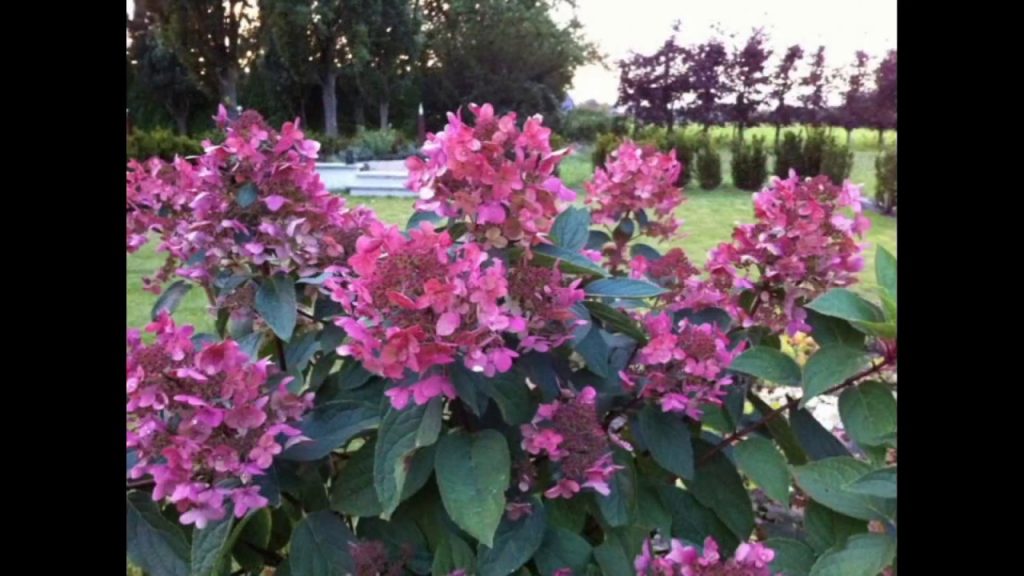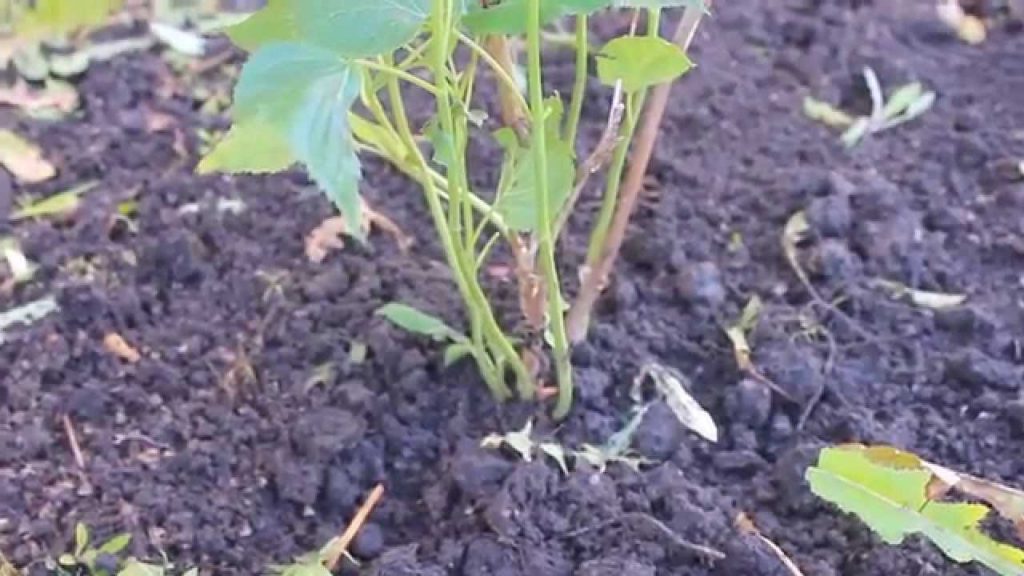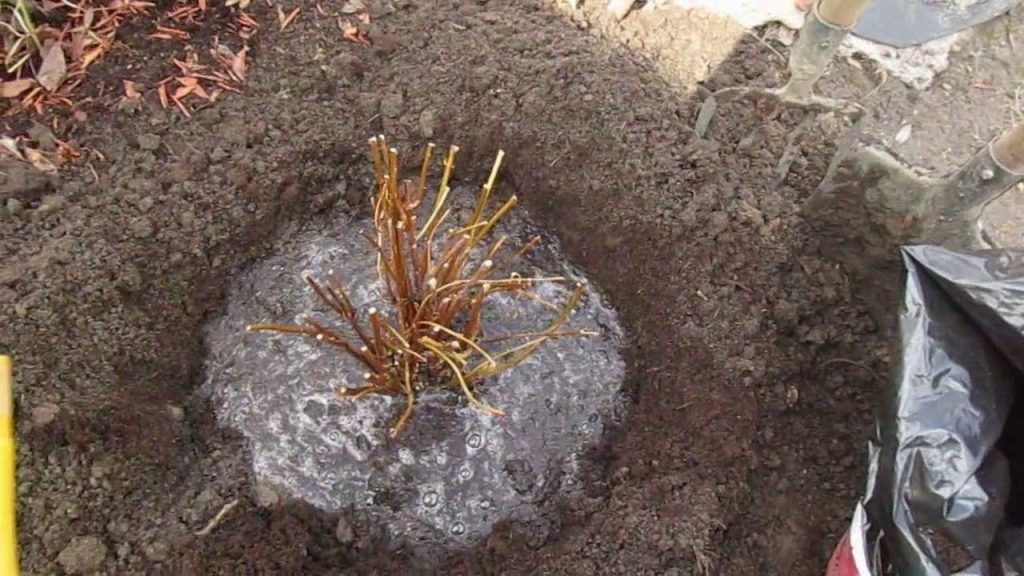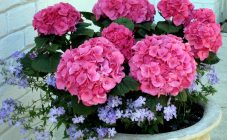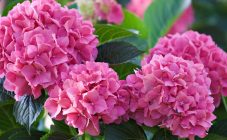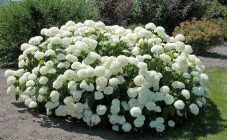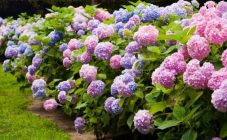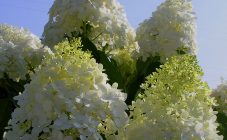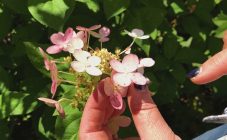Content:
If you want to decorate your site, hydrangea is the best choice for this. A special place among the variety of varieties is occupied by the Weems Red hydrangea. This shrub will decorate the approach to the house in both spring and autumn.
Briefly about culture
The Western world first became acquainted with hydrangea in 1789, when the English botanist D. Banks brought the first seedling from China. Breeding work began in 1900 and after 60 years, 100 new varieties of hydrangea were bred.
The bulk of the hydrangea species are shrubs that grow up to three meters. It is these species that are cultivated. Bloom during the whole warm period. The flowers are small, collected in a spherical or conical brush. There are two types of flowers:
- Fertile - small, located in the middle of the inflorescence.
- Infertile - large, located on the periphery.
Hydrangeas love bright areas, but are sensitive to bright sunlight, and do not tolerate drought. They should be watered regularly, but not waterlogged.
Description of the variety
Hydrangea Red Wings howled was created by German breeder Wim Rutten several years ago. Unusual flowering immediately brought the shrub to the favorites of gardeners. The panicle hydrangea Vims red forms a bush up to 1.5 meters in height. Its vertices are spread far enough across the width, forming a kind of ball with a diameter of up to 2 m. It grows by 20-25 cm per year. The branches are painted in an unusual burgundy color.
Inflorescences are large, up to 40 cm long, openwork. Fruit and sterile flowers develop in a ratio of 50 to 50. Flowers are large, up to 7 cm in diameter. Brush shape resembles a narrow pyramid. A characteristic feature of this variety is the tricolor flowering. During flowering, the entire space around is filled with the scent of honey. Inflorescences are formed on the shoots of this year.
The leaves of this shrub are dark green, shaped like an egg. In autumn, they turn purple, red, yellow with a metallic sheen. Even after the flowers have fallen off, the bush looks great.
The roots of the bush are located in the upper layer of the soil and are not able to deliver water from the deep layers of the earth to the plant. This determines the features of plant care described below.
An adult hydrangea is capable of surviving frosts down to -30 C. In central Russia, it winters without shelter. But despite the hardiness, young shoots up to two years old should be covered for the winter.
The plant does not like direct sunlight, grows well in partial shade. It is important to shelter Weems Red from the north wind, it is better to plant the plant not in an open area, but on a sheltered from the wind from the north side.
This beauty is propagated vegetatively. To do this, either the cuttings are rooted, or the cuttings are cut. After the formation of roots, in both cases, you can transplant a young bush to a new place.
Landing
Hydrangea Red is sensitive to soil composition. Sour or neutral soils are best suited for her. The site for planting a seedling should be fertile, light, without stagnant water.
This species is propagated mainly by cuttings.To plant a bush, you should dig a hole 40 cm deep and 50 × 50 in size. Three buckets of water are poured into it and planting is carried out the next day. Before planting, the prepared hole is filled with a mixture of earth and peat, humus and sand. Superphosphate, potassium sulfate and urea are added to the prepared soil. The well should be filled almost to the top with this mixture. The seedling is carefully removed from the pot, the roots are straightened and sprinkled with the remaining soil.
Care
Although Williams Red hydrangea is unpretentious, it will take a little effort from the gardener to reveal all the beauty. There are 3 important aspects of grooming to be followed:
- Watering;
- Top dressing;
- Pruning.
According to the description, Wim s red hydrangea is moisture-loving. Pour 30 liters of water into one square meter of the hole. So abundantly water the bush once every seven days. So that the soil does not dry out quickly, it is mulched with straw or sawdust.
For abundant flowering, the shrub requires good feeding. The first time organic fertilizers are applied during the formation of the brushes. This can be manure, compost, or humus. The second time, fertilizers are applied, which include phosphorus, potassium and nitrogen. The time of the second feeding coincides with the ripening of the flowers. To prolong the flowering of the plant, after the full disclosure of flowers, the hydrangea is fed a third time. At this time, complex mineral fertilizers are applied. During the preparation of the bush for winter, the fourth feeding is carried out. At this time, special formulations for hydrangeas, sold in stores, are used.
Only by timely feeding can a strong, healthy and beautiful shrub be grown.
The main pruning is done twice a year. The first - in the spring, before the start of sap flow. At this time, the remaining brushes are cut off, the shape of the bush is made. The second is before winter. Old, damaged shoots should be cut. This procedure will rejuvenate the shrub.
Diseases and pests
The most common disease of paniculate hydrangea is chlorosis. Most often occurs on alkaline soils. To return the color to the leaves, iron chelate is used for foliar feeding. Apply the drug once a week. To prevent this disease, iron things - nails, horseshoes can be instilled into the hole near the plant.
When affected by white rot, the bush turns brown, signs of decay appear. The leaves are covered with cobwebs. Phytosporin is used to treat this disease.
The appearance of yellow-green spots on the leaves indicates powdery mildew. Over time, the damaged areas turn brown.
If there are no buds on the bush, and uneven, blurry ring-shaped spots appear on the leaves, the plant is sick with the ring spot of hydrangeas. This disease cannot be cured. The plant is destroyed.
Does not bypass hydrangea and aphids. It can be detected by curled apical leaves. If you unfold such a leaf, aphids will sit on the back side. Some gardeners recommend washing it off with soapy water using a sponge. But it will be much more effective to treat the plant with an insecticide.
Untreated plants can suffer from anthracnose, spider mite, Colorado potato beetle. In order not to think what exactly struck the plant, they carry out preventive treatment of the bushes with such fungicides as Skor, Maxim, Horus, Aktara.
Landscape: use in garden decoration, flower beds
This colorful shrub looks great both in a group and when growing a single plant. It is often used to create contrasting flower beds. It looks great surrounded by conifers and other evergreen shrubs.
With the help of Weems red hydrangea, you can arrange a hedge or alley to the house.Such use of the plant will allow you to get a beautiful landscape accent and fill the air around with a subtle aroma with honey notes.
Despite the requirements for care, panicle hydrangea is available for planting on a private plot. Subject to the rules of care, she will thank you with a long, lush and incredibly beautiful flowering.
